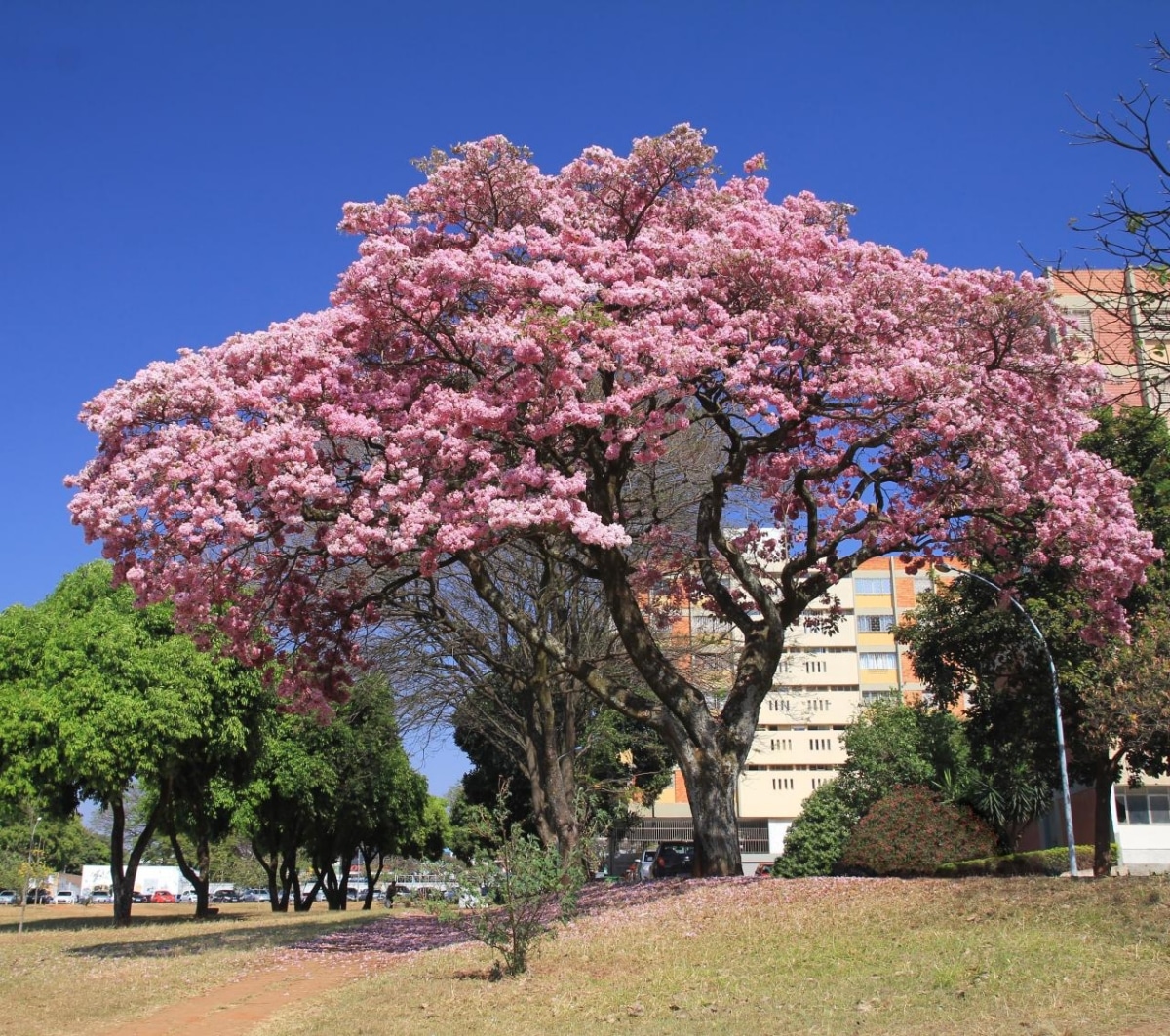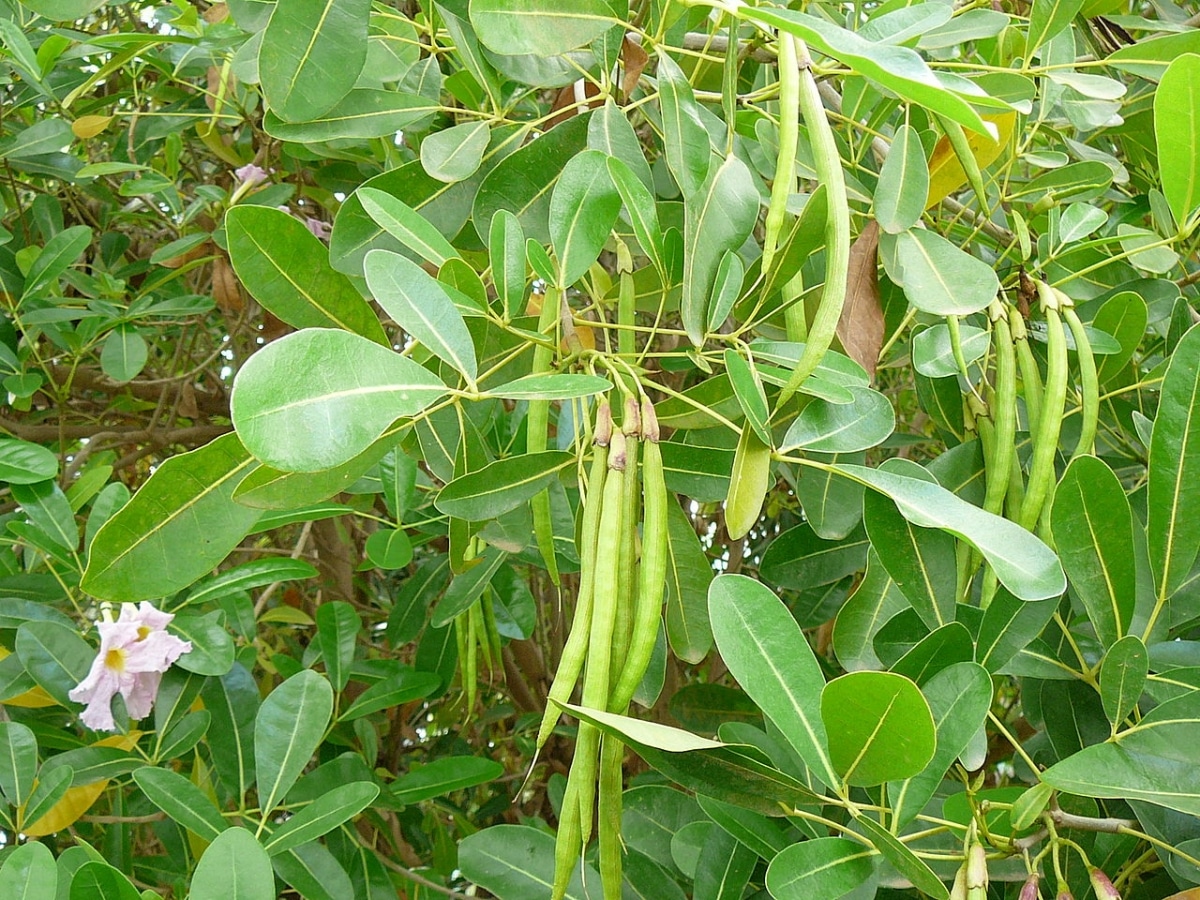
Image - Wikimedia / Alejandro Bayer Tamayo
The pink lapacho, or pink guayacán as it is sometimes also known, it is one of those tropical deciduous trees that are worth growing in gardens where the weather is warm. Despite its size, its roots are completely harmless to pipes and hard-surfaced soils, so it is possible to plant it on small plots.
In fact, and with frequent pruning, it would even be possible to keep it in a pot throughout its life. Even in its places of origin there are those who are encouraged to have it as a bonsai.
Origin and characteristics of Tabebuia rosea

Image - Flickr / Mauricio Mercadante
In this deciduous tree native from Mexico to South America, whose scientific name is Tabebuia rosea. It receives many of us: pink guayacán, pink lapacho, mocoque, apamate, maculís, macuelizo, maqulishuat. In Spain it is a little cultivated species, but it is usually called guayacán or pink lapacho as well.
It grows to a height of 6 to 15 meters (in its natural habitat it reaches 25 meters), with a trunk about 30-35 centimeters thick whose bark is greyish. The leaves are clapped, composed of 3 to 5 elliptical or oblong leaflets, and can measure up to 34 centimeters long.
Its flowers are bell-shaped, pink or lavender.. And the fruit is a linear capsule about 30 centimeters long that contains about 10 winged seeds.
What uses is it given?
Now Tabebuia rosea It has several uses, which are:
- Ornamental: It is used to decorate gardens, patios, terraces. Its crown provides shade, and when it blooms it is quite a sight, since its leaves are practically hidden behind the flowers. In addition, it can also be worked as a bonsai.
- Medicinal: in their places of origin an infusion is made with the leaves to reduce fever; and the bark is cooked to alleviate the symptoms of diabetes or malaria.
- Wood: It is used in cabinetmaking, crafts and also to make boxes and the like.
What care does the pink lapacho require?
La Tabebuia rosea it is not a tree that is demanding; in fact, the only requirement it has is that to survive the climate must be warm. When frost occurs in a place, or even when the temperature in winter stays below 10 degrees Celsius for a long time, the plant suffers significant damage to the point that it may not survive, especially if it is young. Therefore, it is important to know what your needs are, so that we can give you the care you really need.
Climate

Image – Flickr/Phil
It is a tropical tree that loses its leaves in the dry season (in temperate regions it does so in autumn-winter, when the cold weather arrives). Therefore, can be successfully grown outdoors year-round in warm, frost-free climates, where there are a few months in which it rains less.
When the weather is cooler or colder, it is harder to keep you healthy.
Location
Ideally, it should be grown outdoors, in full sun.. But if the temperatures in your area drop below 10ºC, it is preferable that during that time it is in a greenhouse or inside the house, in a room where there is a lot of light and there are no drafts, otherwise it will have a bad time.
Earth
- Garden: it grows well in almost any type of soil, even in poor ones, but it would not be good to plant it in those heavy and/or very compact soils since the air could barely circulate well between the granules of the earth and the roots would not be able to breathe with normal.
- Flower pot: if it is going to be grown in a pot, we recommend planting it in a really good universal growing medium, such as Flower or Fertiberia for example. I advise avoiding others that, although they are more common and sometimes cheaper, are not of good quality.
Irrigation
The pink lapacho is a plant that has to be watered from time to time. It is important that the soil is always a little moist, since it does not resist drought. Thus, in spring and summer we will water about 2, 3 or 4 times a week, depending on the climate and the time it takes for the soil to dry; and in autumn and winter we will do it 1 or 2 times a week.
Subscriber
It must be paid during the spring and summer to get it to grow and get as strong as possible for winter. Therefore, we recommend the application of Organic fertilizers such as manure or guano. However, if it is in a pot, liquid fertilizers or fertilizer bars will be used.
Multiplication

Image - Wikimedia / Mauricio Mercadante
La Tabebuia rosea multiplies by seeds in spring-summer. The way to proceed is simple: you just have to put them in a glass of water to see which ones sink, and discard the rest. Then plant them in a seed tray filled with seed potting soil (such as this) or another such as coconut fiber previously watered; and finally put one or two in each hole, a little buried.
The seedbed is placed outside, in full sun, and that's it. Go watering it when you see that the soil dries up, and in a few weeks they will germinate.
Rusticity
Resistant up to 10ºC, although it is better not to drop below 15ºC.
How about the Tabebuia rosea? Have you heard of her?